Scholar’s Mate: Win with the 4-Move Checkmate
If you’re new to chess, you may have heard about a quick strategy to win in four moves. This is called the Scholar’s Mate, one of the most common patterns beginners fall for. Finishing the game off in four moves might seem difficult and not so frequent. But according to the database, nearly 700,000 games have ended with this checkmate!
In this article, we will learn everything about the Scholar’s Mate.
Introduction to Scholar’s Mate
The Scholar’s Mate is a checkmate pattern that involves attacking the enemy king with your queen and bishop, while the king has little or no protection from its pieces. The basic idea is to move your queen to h5 (or h4 if you are black), then to threaten f7 (or f2) with the support of your bishop on c4 (or c5). This delivers a checkmate, as the king cannot escape or block the attack.
The fundamental idea of Scholar’s mate comes from the concept of weakly defended points. When the game starts both white and black sides have certain weak points in their camp which are defended by only one piece.
Let’s take the black side.
The points are:
a7 & h7: defended only by the rook
b7 & g7: defended only by the bishop
c7: defended only by the Queen
f7: defended only by the King
Now thinking logically, we would get the most benefit by attacking the f7 point, Because the game’s ultimate goal is to checkmate the opponent king.
This is the basis for the Scholar’s mate.
You can attack points like b7 or h7 to win a pawn, but you must ask the question. Is it worthwhile strategy to spend so many tempi to attack a point that might not even be helpful in the long run?
Of course, that being said. This strategy of Scholar’s mate is naïve and one-sided and can backfire easily as we will see later in the article.
Here is an example of all the ways how the Scholar’s Mate can happen in a game:
How to use the Scholar’s Mate to your advantage?
The Scholar’s Mate can also be used as a weapon if you know how to set it up and recognize when your opponent is falling for it. You can use it as a surprise tactic or a psychological trick to intimidate your opponent. However, you should not rely on it too much, as it can backfire if your opponent knows how to counter it or punish your early queen moves.
This is because once your opponent has successfully defended against your only threat, i.e. threatening a one-move mate on the f7 square. You will be forced to move the queen at some point. This will lead to a loss of time as that tempi could’ve been spent better in developing the pieces and castling. Therefore, inevitably your opponent will gain an advantage of lead in development or better control of the center.
Defend against the Scholar’s Mate
The first thing to notice is that Scholar’s Mate relies on White playing e4, Bc4, and Qh5 in the opening, which are not the best moves for developing the pieces and controlling the center.
White is wasting time by moving the queen and neglecting the development of the minor pieces and the king’s safety. Black can take advantage of this by playing moves that counter White’s threats and also improve Black’s position.
There are three main ways to defend against Scholar’s Mate:
1) Play g6:
This move eliminates the mate threat while simultaneously attacking the queen if it is on the h5 square. It also prepares to fianchetto the dark-squared bishop on g7, forming a solid pawn structure and controlling the long diagonal. If White continues with Qf3, Black can gain room and attack White’s bishop by playing Nf6 and subsequently d5.
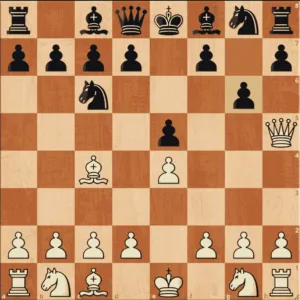
2) Qe7:
This move defends the e5 pawn while simultaneously protecting the f7 pawn. It also allows Black to later castle Queenside, which is safer than casting Kingside.
The disadvantage of this move is that it prevents the dark-squared bishop from developing and exposes the queen to attacks.
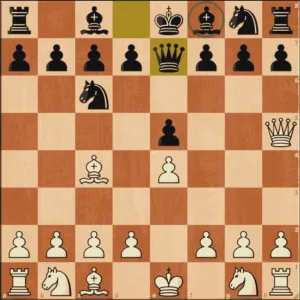
3) Qf6:
This move also defends the e5-pawn and protects the f7-pawn. It also targets White’s queen (if it’s on f3), forcing her to retreat or swap. The disadvantage of this move is that it prevents the knight on f6 from developing and exposes the queen to attacks.
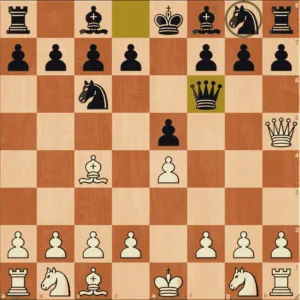
All of these moves are better than playing Nf6, which allows White to play Qxf7# and deliver Scholar’s Mate. However, some of them are preferable to others depending on White’s response.
The best way to learn how to defend against Scholar’s Mate is to practice with different scenarios and see how they affect the outcome of the game.
How to avoid the Scholar’s Mate?
The best way to avoid the Scholar’s Mate is to follow some basic principles of chess opening:
- Pay special attention to the f7 square in the opening.
- Develop your pieces quickly and evenly, especially your minor pieces (knights and bishops).
- Do not move the same piece more than once unless necessary.
If you follow these principles, you will be able to prevent or defend against the Scholar’s Mate easily.
Why is the Scholar’s Mate effective?
It is effective because it exploits two common weaknesses of beginner players:
- Lack of king safety
- Lack of development.
Many beginners neglect to protect their king by castling or moving their pawns in front of it. They also tend to move the same piece multiple times, instead of developing all their pieces quickly and harmoniously. This leaves them vulnerable to quick attacks. Also, a common issue is that beginners don’t consider the purpose of their opponent’s move and only consider their plans.
Here are some tips on how to use the Scholar’s Mate effectively:
- Do not play it in every game, as it will become predictable.
- Do not play it against stronger players, as they will know how to play against it and exploit the weaknesses.
- Do not play it if your opponent has already protected his king or developed his pieces well.
Conclusion
The Scholar’s Mate is a basic yet effective checkmate pattern that can help you quickly win games. It is effective because it takes advantage of several typical shortcomings among new players. Even if the opponent doesn’t try to win with the Scholar’s mate, make sure to watch over the f7/f2 square in the opening stage. As it is a vulnerable point until other pieces guard or block it as well.
We also recommend reviewing 3 Hardest Mate-in-4 Ever, Chess Tactics: Study 1 – Mate in 2 as well as Chess Tactics: Study 3 – Mate in 2.




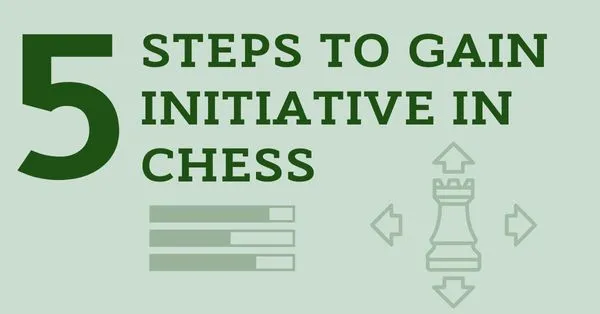
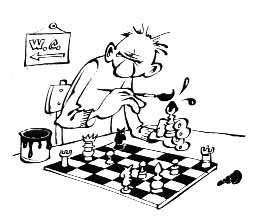




Comments: